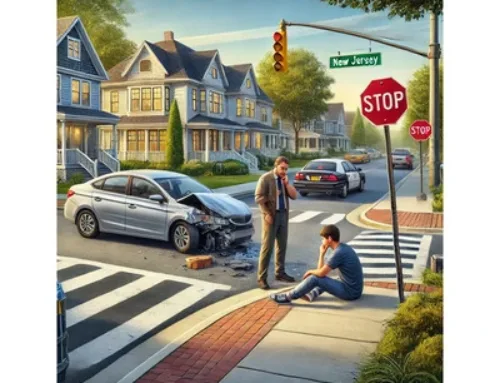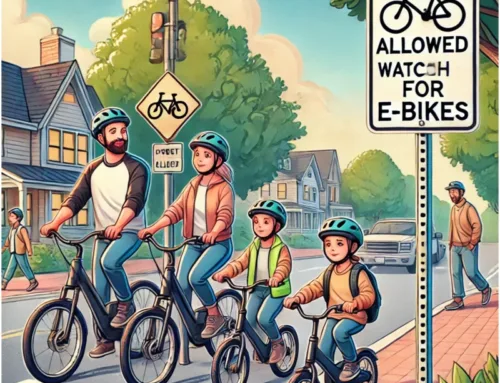Any motor vehicle accident has the potential to result in devastating injuries or loss of life, but for a number of reasons, crashes involving large commercial trucks are of particular concern for trucking companies and regulatory agencies. Accidents involving these trucks can be particularly deadly, both because of their sheer mass and due to the height difference between a tractor trailer and a consumer sedan. So, we can readily understand that technologies that improve the safety of large commercial trucks and help to reduce the risk of accidents are immensely valuable, both for the companies that operate these vehicles and for the motorists who share the road with the trucks.
 In general terms, there are three categories of factors that can contribute to a truck accident: external factors, mechanical factors, and driver factors. A trucking company has very limited influence over external factors such as the behavior of other motorists, pedestrians, or animals; road maintenance; and weather conditions. Conversely, the company has a great deal of control over mechanical factors, and maintenance logs can make it fairly simple to determine whether the trucking company has satisfied their duty of care with respect to maintaining a vehicle in the aftermath of an accident. In the past it has been difficult for companies to exercise the same level of influence over driver behavior, although they are legally responsible for the actions of a driver that they hire and allow to operate one of their vehicles. This is the challenge that recent developments in vehicle safety technology have taken on with advances in driver assistance, automation, and vehicle monitoring.
In general terms, there are three categories of factors that can contribute to a truck accident: external factors, mechanical factors, and driver factors. A trucking company has very limited influence over external factors such as the behavior of other motorists, pedestrians, or animals; road maintenance; and weather conditions. Conversely, the company has a great deal of control over mechanical factors, and maintenance logs can make it fairly simple to determine whether the trucking company has satisfied their duty of care with respect to maintaining a vehicle in the aftermath of an accident. In the past it has been difficult for companies to exercise the same level of influence over driver behavior, although they are legally responsible for the actions of a driver that they hire and allow to operate one of their vehicles. This is the challenge that recent developments in vehicle safety technology have taken on with advances in driver assistance, automation, and vehicle monitoring.
Few drivers will admit to unsafe driving habits such as speeding, aggressive driving, or failing to signal lane changes, and in the past, it was difficult for trucking companies to know if their drivers were engaging in these behaviors. In-vehicle driver performance monitoring, termed “telematics” within the industry, allows trucking companies an unprecedented insight into the way their employees are actually driving, which they can use to provide additional training to drivers with safety issues before they result in a crash. These technologies record and transmit data when the truck experiences hard braking, abrupt acceleration, or sharp turns. Other data may also be collected about vehicle speed, gear engagement, accelerator position, and GPS location. A number of these monitoring systems also include cameras that record within the truck cab and toward the road ahead of the vehicle, allowing safety managers at the company to observe the event that precipitated the unsafe driving behavior and the details of the incident. The presence of these monitoring and recording systems may also have a preventive effect, simply because the drivers know their actions are being observed and are therefore less likely to indulge in unsafe behaviors.
Other truck safety technologies take a more active role in preventing accidents, either by warning the driver of an unsafe circumstance or by acting automatically to avoid a collision. These technologies are designed to mitigate one or more of the three primary types of truck accidents that driver error can contribute to: rear-end collisions, out-of-lane or sideswipe accidents, and rollover or jackknife incidents. You have heard of some of these technologies as applied in cars- like collision avoidance (automatic breaking), lane departure warning devices, and the like.
It gets more sophisticated in the trucking industry. Rear-end collisions frequently result from speeding and following too closely, so forward collision prevention systems attempt to address these problems. Many systems use radar to detect vehicles up to 500 feet ahead of the truck, though the radar may miss smaller vehicles such as bicycles and motorcycles, as well as anything that isn’t metallic. Newer systems use cameras to detect motion, resulting in more accurate detection ability for smaller hazards. These sensory systems may be coupled with adaptive cruise control; rather than continuing at a programmed speed, the truck can be instructed to maintain a specific time-distance behind the vehicle ahead of it, decelerating when it detects the forward vehicle slowing down and returning to its original speed if the other vehicle accelerates or changes lanes. This can be particularly valuable for averting an accident if the truck is suddenly cut off by another car. Recently introduced technologies use cameras to read posted speed limits and emit sound alerts if the truck is moving at more than 5 miles above the limit.
Lane departure warning systems work in a similar way, monitoring the truck’s position within the lane markings on the road and sounding an audible alert — similar to the rumble strip on the road shoulder — if the vehicle moves out of lane while the turn signal is not on. These systems serve not only to warn drivers of impending danger, but to help train them to be more aware of their position within their lane. Stability control systems take a more active role, both alerting the driver when it detects a maneuver that creates a risk of rollover, and automatically engaging the brakes to reduce lateral acceleration and maintain vehicle stability. Given all this information, we all have to be wary of older trucks on the road which may lack the newer technology and remain aware that it’s always possible for the truck driver to either override or ignore the technological advances available. So, despite technological advances in trucking, it still pays to be extra vigilant when driving in the company of those big rigs.
Continued reading Truck Accidents- New Technology May Help Your Accident Case – Part Two
Contact MyNJInjuryLawyer Howard P. Lesnik
If you or a loved one suffered an injury in an accident in NJ, you should contact an attorney familiar with handling these claims. An experienced NJ Injury Lawyer will know how to obtain medical records, videos, photographs, experts, locate witnesses and contact the insurance company so you can make a claim for your injuries.
My NJ Injury Lawyer Howard P. Lesnik, Esq. offers complimentary strategy sessions to address any issue or questions you may have for your injury claim in NJ.
Please contact NJ Injury Lawyer Howard Lesnik, Esq., immediately if you were involved in an accident. I personally handle NJ personal injury cases on a regular basis. Please contact me now by email, by phoning 908.264.7701, or by completing the form to the right to schedule your complimentary 30-minute strategy session. Call me direct and I will answer 5 questions that you have about your potential claim.







